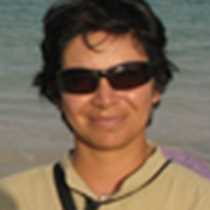Española Island
After last night's navigation from Floreana Island we arrived early this morning to Española. This is considered by far the oldest island in whole archipelago, and its main characteristic is the impressive landscapes along its coastline. We started our day by visiting its northern realm, known as Gardner Bay. This area has one of the most gorgeous beaches of the entire archipelago; surrounded by blue-turquoise waters and white sand, Gardner is the home of hundreds of the Galápagos sea lions and colorful marine iguanas.
One of our activities was the snorkeling at Gardner Islet, which lies near the beach and the bay. The morning water conditions were just perfect: great visibility and calm waters! We also had kayaking as another option, and as we paddled along the cliffs, we were able to find lots of blue-footed boobies, pelicans, sea lions and a couple of red-footed boobies flying around. This particular species of booby is normally found at specific locations around the islands, making this a truly unique sighting.
For those who wanted to take a leisurely morning, a relaxing stroll along the beach was very appealing, giving everyone the chance to literally do what they wanted to do!
After leaving Gardner Bay behind we headed towards the western side of Española, Punta Suarez. This usually ends up being one of the favorite places for our guests in the entire Galápagos. Its cliffs, large colonies of sea birds, colorful iguanas, curious mockingbirds and the largest lava lizards are few of the attractions of the island. As the oldest island in the archipelago, several species of plants and animals can only be found here and therefore are considered endemic.
The waved albatross, currently nesting, is one of the endemic birds found nowhere else in the world, and today we found them not only nesting, but several couples already had their first hatchlings. Unfortunately that was not the only things we found; several eggs already had been abandoned due the lack of care of some “first timers.”
Leaving sad things aside, we were very fortunate to find newly formed couples displaying their courtship ritual. Albatross are known to be monogamous birds, however and according to some studies, there is a small percentage of infidelity, as well. As we left the breeding grounds of the albatross we encountered a lookout point where we observed the famous “blow hole.” Nazca boobies, blue-footed boobies and swallow tailed gulls were constantly flying above our heads, and some of the albatrosses were jumping off the cliffs, too.
We returned aboard and had a great time talking about our week and the great moments we had here in Galápagos.
After last night's navigation from Floreana Island we arrived early this morning to Española. This is considered by far the oldest island in whole archipelago, and its main characteristic is the impressive landscapes along its coastline. We started our day by visiting its northern realm, known as Gardner Bay. This area has one of the most gorgeous beaches of the entire archipelago; surrounded by blue-turquoise waters and white sand, Gardner is the home of hundreds of the Galápagos sea lions and colorful marine iguanas.
One of our activities was the snorkeling at Gardner Islet, which lies near the beach and the bay. The morning water conditions were just perfect: great visibility and calm waters! We also had kayaking as another option, and as we paddled along the cliffs, we were able to find lots of blue-footed boobies, pelicans, sea lions and a couple of red-footed boobies flying around. This particular species of booby is normally found at specific locations around the islands, making this a truly unique sighting.
For those who wanted to take a leisurely morning, a relaxing stroll along the beach was very appealing, giving everyone the chance to literally do what they wanted to do!
After leaving Gardner Bay behind we headed towards the western side of Española, Punta Suarez. This usually ends up being one of the favorite places for our guests in the entire Galápagos. Its cliffs, large colonies of sea birds, colorful iguanas, curious mockingbirds and the largest lava lizards are few of the attractions of the island. As the oldest island in the archipelago, several species of plants and animals can only be found here and therefore are considered endemic.
The waved albatross, currently nesting, is one of the endemic birds found nowhere else in the world, and today we found them not only nesting, but several couples already had their first hatchlings. Unfortunately that was not the only things we found; several eggs already had been abandoned due the lack of care of some “first timers.”
Leaving sad things aside, we were very fortunate to find newly formed couples displaying their courtship ritual. Albatross are known to be monogamous birds, however and according to some studies, there is a small percentage of infidelity, as well. As we left the breeding grounds of the albatross we encountered a lookout point where we observed the famous “blow hole.” Nazca boobies, blue-footed boobies and swallow tailed gulls were constantly flying above our heads, and some of the albatrosses were jumping off the cliffs, too.
We returned aboard and had a great time talking about our week and the great moments we had here in Galápagos.




